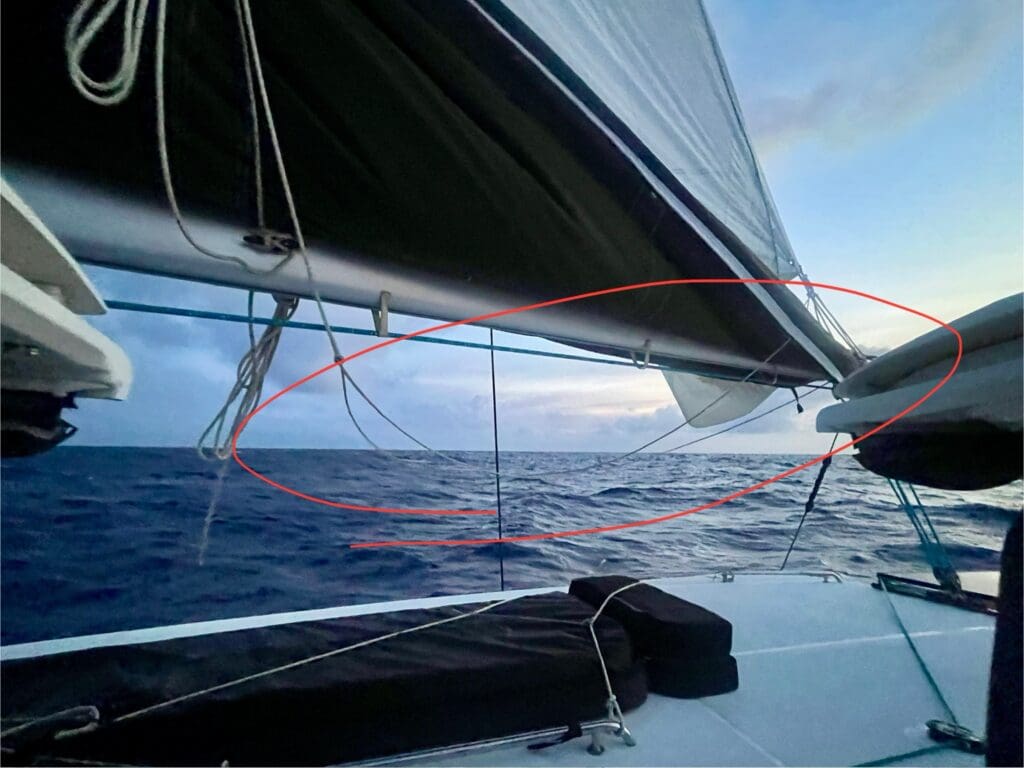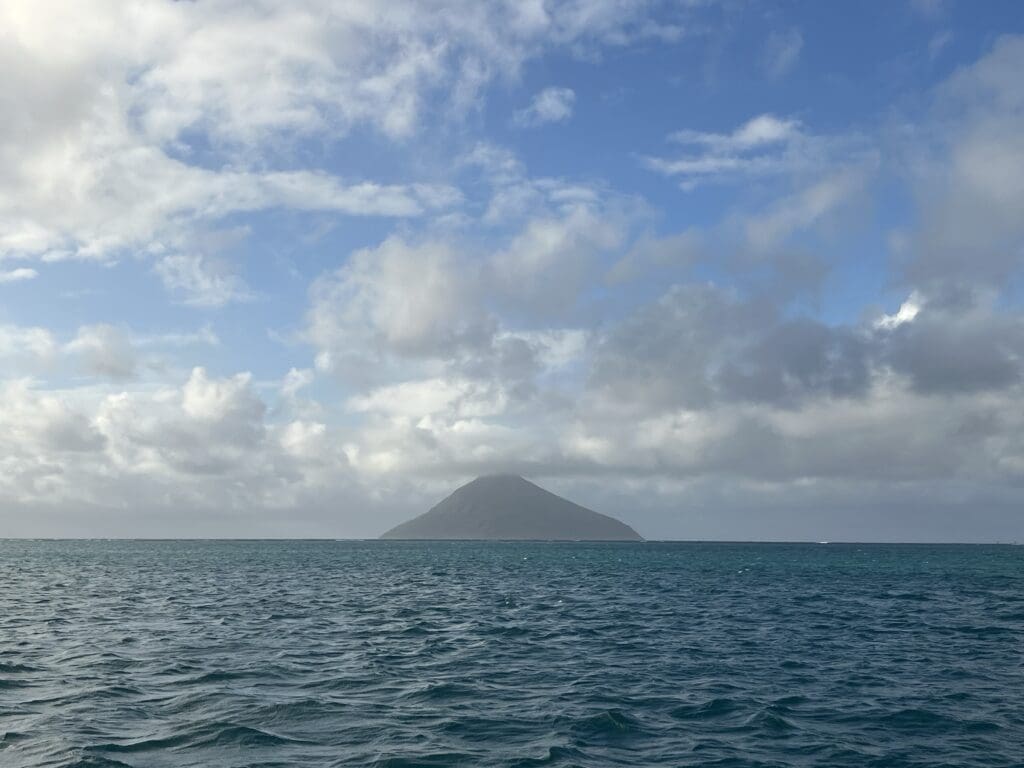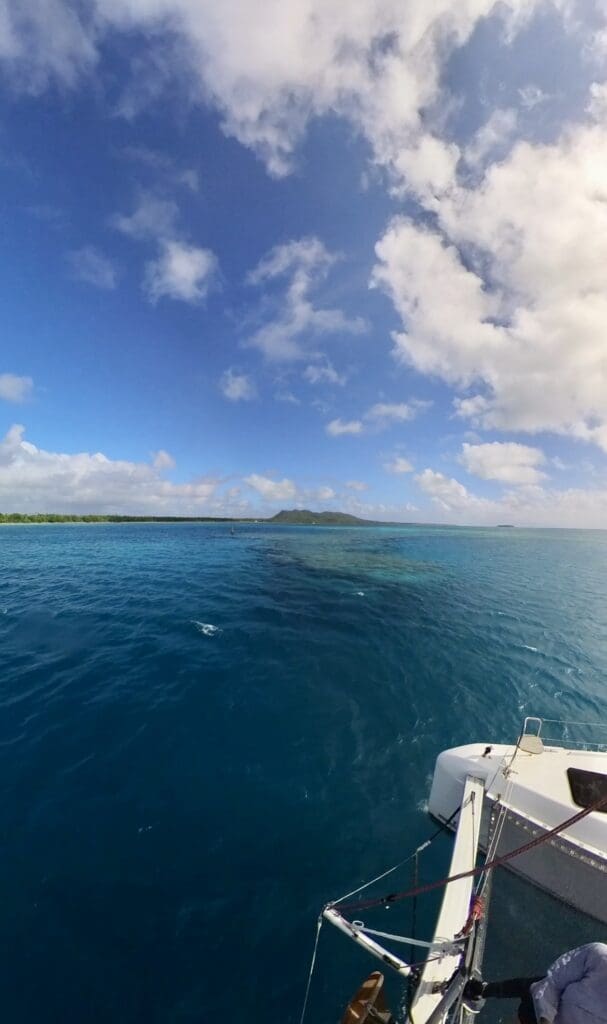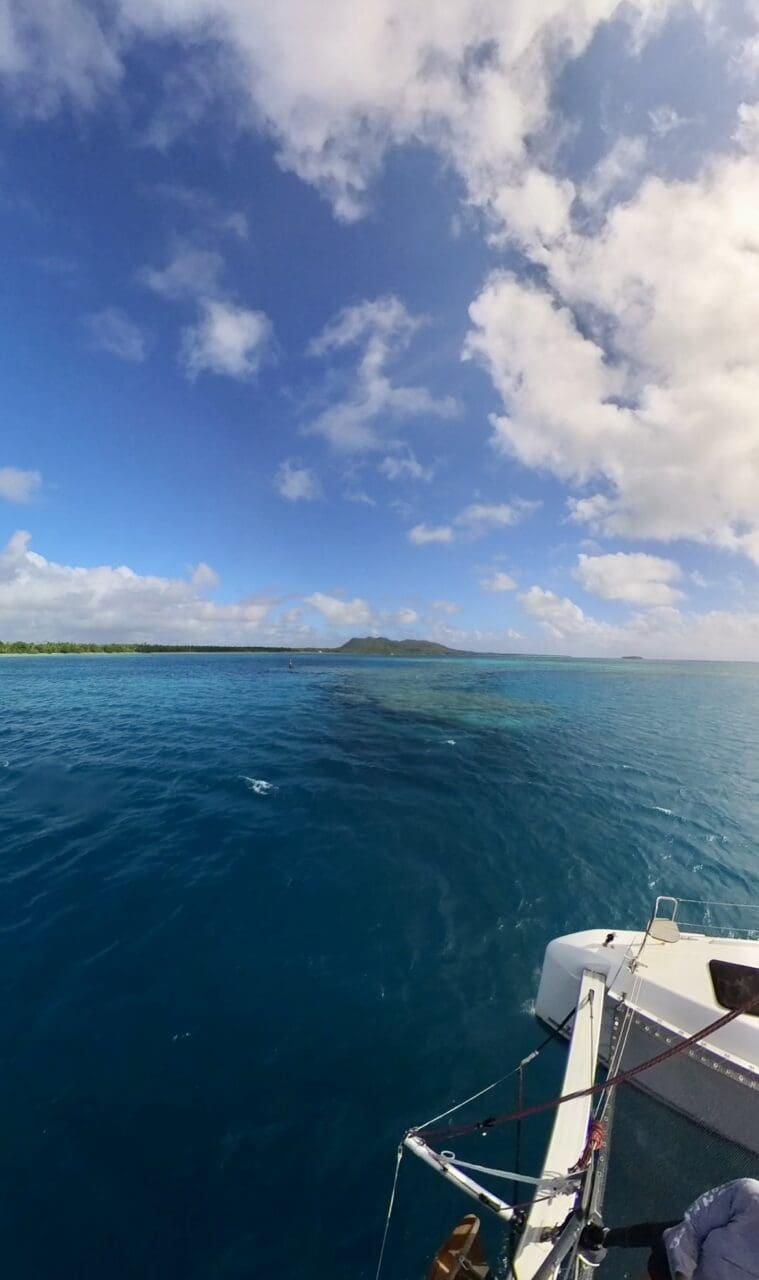Last night was rough. The 11ft seas from yesterday’s forecast materialized, tossing Sabado in every direction. It was difficult to hear anything over the roaring sound of waves breaking and the howling wind. As the sun began to rise, I realized one of our lazy jacks had become disconnected and was dangling below the boom. If we needed to drop the sail or reef again in these conditions, we’d risk the mainsail spilling out to one side. This is not the first time we’ve encountered this issue. I apologetically woke Ray up, knowing he’d want me to send him up the mast to fix it— a tough start to the day.

He attached the topping lift to his bosuns chair and used the spinnaker halyard as a safety line. We should have taken a minute to think before getting started because I couldn’t hear him over the sound of the winch, wind, and waves, and he couldn’t use hand signals because he needed to cling to the mast so as not to get thrown around with the motion of the boat. We should have grabbed our headsets. Instead, he yelled as loudly as he could, and I pretty much just stopped and started the winch when I saw his mouth open. It was not a perfect process. We were both frustrated, but we had to work through the situation at hand. I brought him up past the spreader, and he was able to reconnect the lazy jack and descend to safety. He got tossed around pretty aggressively, so I’m sure he’ll have some bruises tomorrow. He laid back down for a while before making us some coffee and relieving me from watch.
I sat in the cockpit, sipping my coffee and marveling at the ginormous waves. I ooh’d and ahh’d at them as they rose above the solar arch, curling at the top before breaking and sending us soaring forward. Unfortunately, our ETA was not panning out in our favor. As is, we’d arrive at the pass at sunset, forcing us to drift around for 12+ hours waiting for daylight before entering. We decided to drop the sails so we could motor dead downwind, directly to our destination, shaving several hours off the trip. We caught our first glimpse of land just after lunch.

We raised our Q flag as we entered Tongan waters. The clouds parted as we navigated the pass, so we had excellent visibility to avoid the reef on either side.

The current was strong, but Ray used both engines to keep us on course while I watched for hazards from the bow. There was only one other boat in the lagoon, so we dropped anchor, kicked back, and relaxed for the rest of the afternoon. The wind picked up, bringing us a nice cool breeze through our open hatches. It smells clean and fresh here. We’ll sort out the check-in process tomorrow, but for now, we’re going to sleep!
Here are our stats from this passage, courtesy of Saillogger—
Distance: 1375.4 miles
Duration: 9 days, 7hrs
Avg Wind Speed: 18.1kn
Avg Speed Over Ground: 6.1kn
Thanks for following along! We’ll resume regular video/blog postings next week. 🙂


13 Responses
Congrats! Enjoy that passage drink and that glorious experience of sleeping together at the same time!
Thank you!! ❤️
Congratulations!!🍾
Thanks, Stephan! ❤️
hi – finally a picture of land. i love land pictures. now i just need underwater pictures.
Congratulations on another successful passage! You two make a great team! Rest up and enjoy your view.
Thank you!!❤️
Hopefully soon🤿
Congratulations on a safe passage. Now your Dad and I can get some sleep too!😂
Haha! Thanks for keeping an eye on us❤️
Congrats – nice job. I am looking forward to hearing the details on the check in. Avoiding the dock at Neiafu seems like a great plan. We are leaving Fakarava for Tahiti today.
Thanks, Fred! We’ll be sure to share our experience. Hope you have perfect weather on your passage and sunshine in Tahiti! 🤞🏼🤞🏼
Hello Holly and Ray
I have yet to gain experience with catamaran sailing, but I still plan to acquire a catamaran in the beginning of next year…..
So far, I have my eyes set on a 48 foot model.
So pardon my lack of experience when I put questions to you.
And can I just get the answers in your next video, than no need to spend time writing to me.,
But first, you mention taking the sails down at the end of the sail to Tonga.
Please, just in short terms, can you give the reasons for not keeping the sails up, while motoring the last stretch?
I did notice the wind direction….
Did you want to avoid having to jibe alot….giving that wind direction….?
Not enough wind to keep pressure on the sails…
Why?
Would it not have added any speed at all…?
And
Is ‘movement’ of Sabado etc a reason to go with or without the sails, in for instance dead downwind….?
Or the seas…
Finally, – I have only followed you on YouTube, and just starting to read your blog, – so have no comparison to the stats from this sail…
But was the average SOG fast or slow, compared to other crossings?
Regards and fair winds
Torsten Stjernholm
Denmark … With English as my second language, so especially lacking some sailing terms….
Ps
And my sailing experience, is from racing dinghy, mostly Laser/Ilca, a lifetime ago, and smaller monohuls.